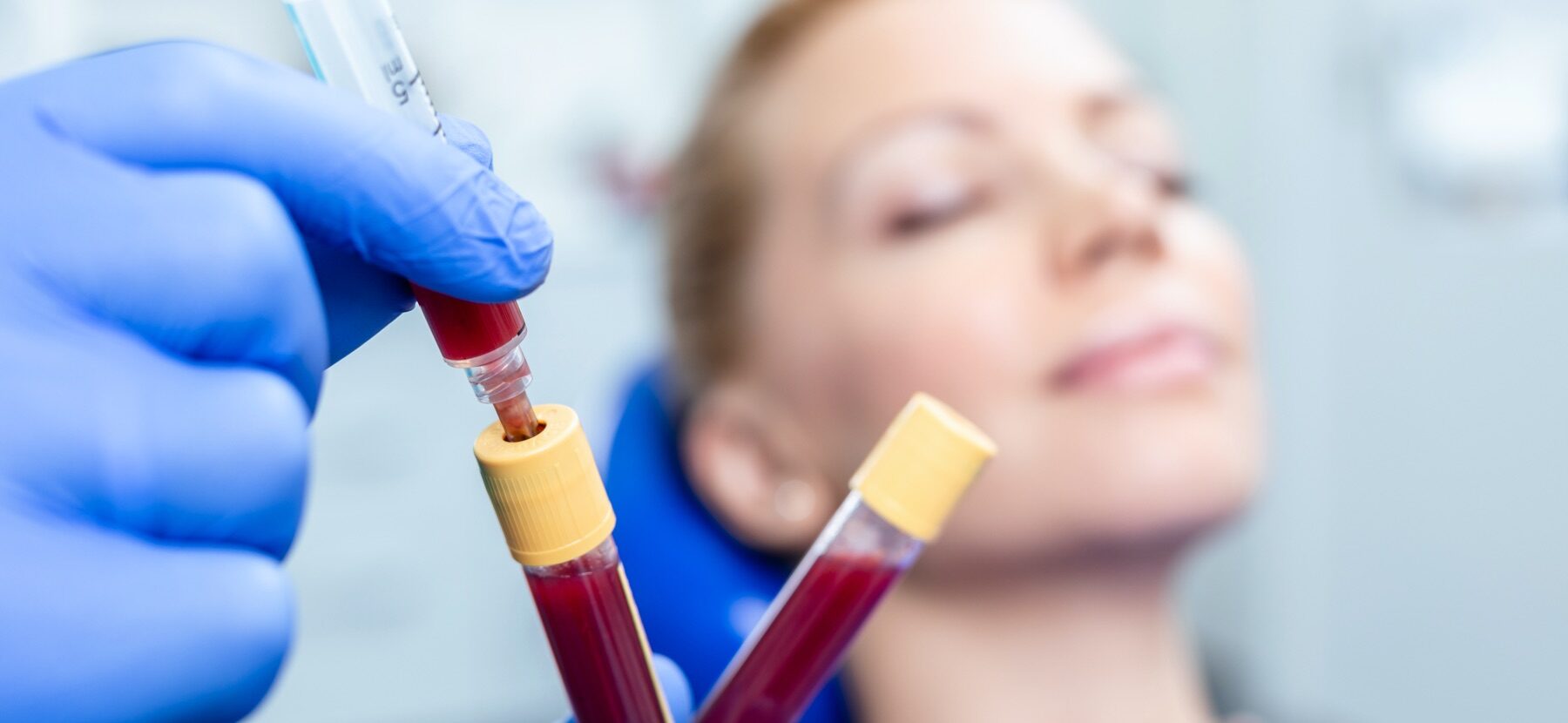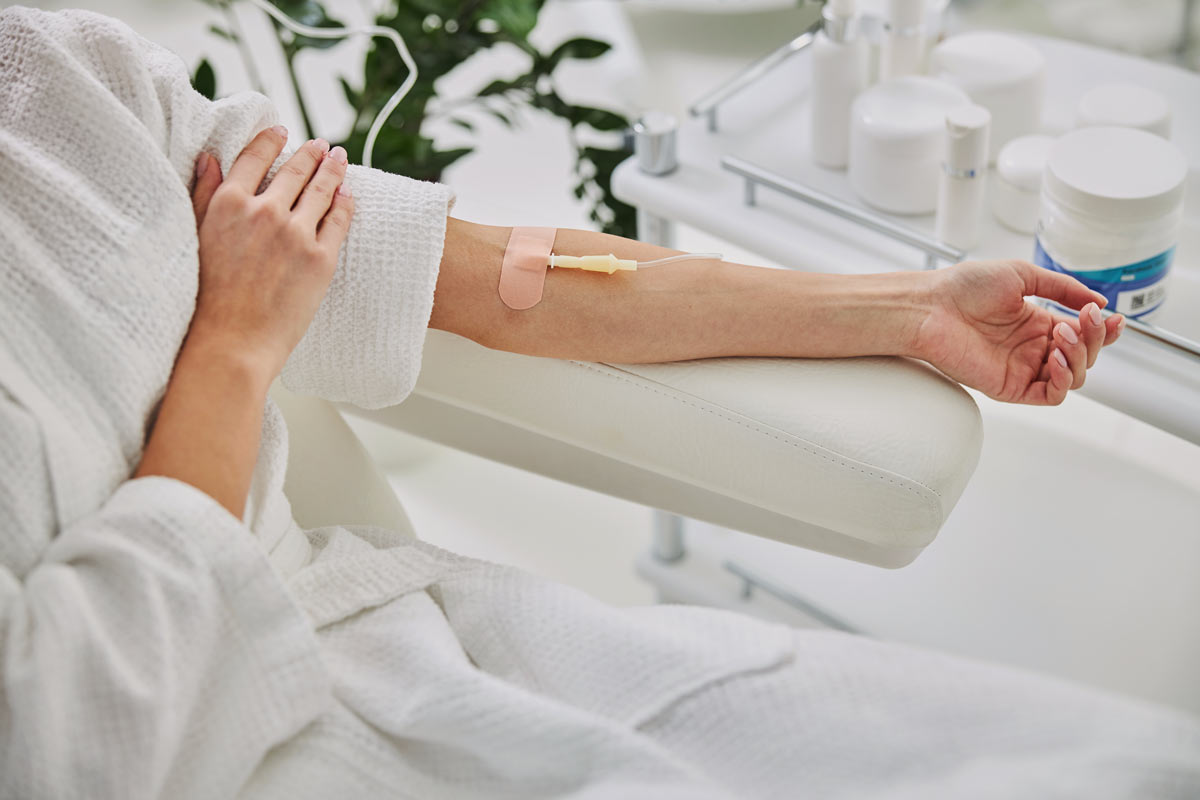PRP: the “vampire lift” under the microscope
PRP is used as a therapy, for example, to improve the appearance of the skin or for hair loss. It is an autologous blood therapy in which the patient is injected with his or her own plasma.

Whoever wants a fresher appearance is looking for a solution that is as painless and side-effect-free as possible. In this country, PRP therapy, also known as “vampire lifting”, is relatively new. Treatments with autologous blood have been doing a good job in other areas for a long time, for example, in various types of injuries, but also to counteract hair loss..
What is PRP?
PRP is a therapy option offered by specially trained doctors. The abbreviation is derived from the written-out term “platelet-rich plasma”: in this form of treatment, plasma obtained from the patient’s own blood is injected under the skin with the finest needles. The facial treatment with autologous blood is suitable for any skin type and can, for example, also lower eyelids, bags under the eyes and other body parts tighten..
Basics and functioning of PRP therapy
That the treatment with autologous blood or more precisely with blood serum supports the body in regeneration, is among other things from sports medicine sufficiently proven. PRP therapy basically copies the healing power of our blood. For PRP in the facial area, the practitioner takes about 20 milliliters of blood from a vein, which is then centrifuged. During this process, the red blood cells separate from the plasma, in which the platelets in turn concentrate in increased numbers. Growth and regeneration factors are released, which support the body in the self-healing process..
The next step is to inject the prepared plasma under the skin with special, particularly fine needles (“microneedling”). This procedure is relatively painless, as an anesthetic ointment is applied beforehand. The injected plasma makes the skin look fresher, smoother and more elastic after only a few days. Since only the body’s own substances are used in the treatment, allergic reactions or other side effects are unlikely. Infections are avoided by appropriate hygiene measures..
When and over what duration is PRP therapy applied to the face?
Because of the freedom from side effects, there are in principle no restrictions in PRP therapy for the face. Usually, the individual treatments take place with a time interval of a few weeks. The effect can last 12 to 18 months, after which it can be refreshed as needed. Therapy with autologous plasma is generally recommended from an age of early 30s, when the elasticity of the facial skin is slowly lost and a lack of moisture becomes apparent..
When and how was PRP therapy developed?
Own blood treatments have been known for a long time. The English physician William Highmore experimented with this form of therapy as early as 1874, and the German surgeon August Bier then finally helped it achieve a breakthrough in 1905. It is documented that from the beginning of the 20th century, the use of autologous blood was increasingly used to treat a variety of ailments. The term PRP appeared at the beginning of the 1960s. However, it was not until 1997 that extensive data on the practical experience was published, which made this form of therapy general awareness..
Frequently it was first used in dental and maxillofacial surgery, and later also in plastic surgery, vascular and cardiac surgery, and wound treatment. The special “vampire lifting” was first used in 1998 on famous stars in the U.S. and only later gradually spilled over to Europe..
What are the areas of application?
The areas of application are quite extensive. In addition to general surgery, PRP is used for sports injuries such as fractures or muscle and ligament injuries. When signs of wear and tear occur due to arthritis, PRP can be equally successful. Here, the plasma is injected directly into the affected joint.
But more and more often this therapy is used in aesthetic medicine, because it has hardly any negative effects. Thus, even targeted small wrinkles on the face or neck can be injected with autologous blood. The effect is less noticeable than with an ordinary lifting, which many patients expressly welcome. Nevertheless, the corresponding skin area is smoothed for a certain time or even permanently. Scars can be softened, even wounds that are difficult to heal are given new impetus and the important collagen is formed anew. PRP can also be combined well with other treatment methods, especially with mesotherapy. For hair loss that is already advanced, a hair transplant can also accompany the therapy.
Find out more now about our range of services in the field of aesthetic medicineor contact us to request a consultation.





